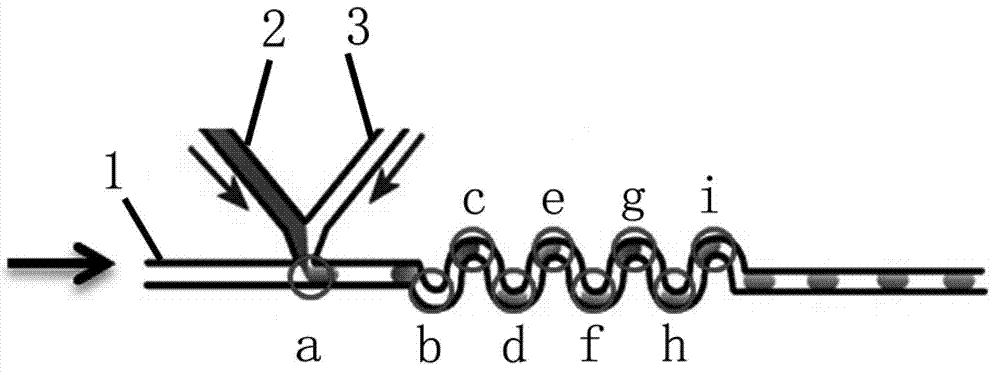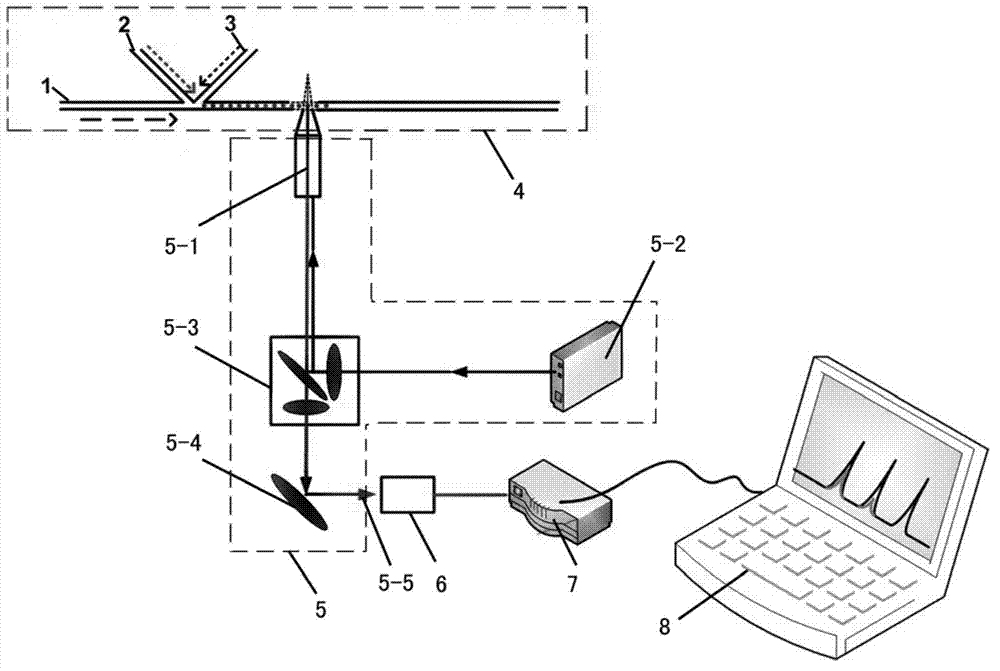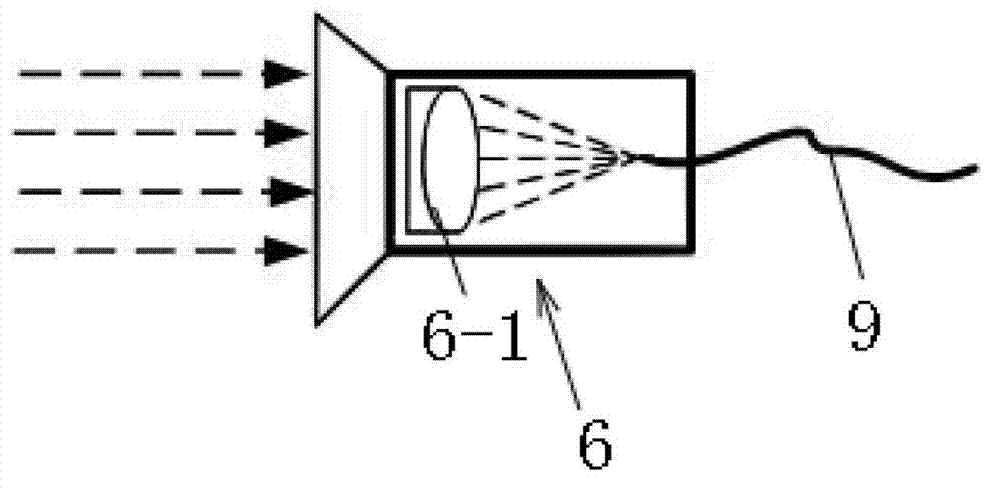Liquid drop microfluidic system and method for detecting interaction between quantum dots and biomolecules
A microfluidic system and biomolecular technology, applied in material excitation analysis, fluorescence/phosphorescence, etc., can solve the problems of complex operation and lack, and achieve the effects of high detection sensitivity, improved accuracy, and simple and easy operation.
- Summary
- Abstract
- Description
- Claims
- Application Information
AI Technical Summary
Problems solved by technology
Method used
Image
Examples
Embodiment 1
[0029] Figure 4 The fluorescence intensity of the mixed quantum dots and biomolecules H24-Cy5 is detected by the fluorescence of the microfluidic chip. All the circles in the figure are a schematic diagram of the detection window at a fixed position on the microfluidic chip. Droplets passing through this fixed position will produce different intensities. Fluorescence signal, the larger the droplet in the circle, the greater the fluorescence intensity. The sequence of H24-Cy5 is as follows:
[0030]
[0031] The experimental conditions were: the flow rates of the first syringe pump 1, the second syringe pump 2 and the third syringe pump 3 were 3 μL min -1 , 1.5μL·min -1 and 1.5μL·min -1 . Set the detection wavelength of the fluorescence spectrometer, the detection wavelength of QDs is 612nm, the detection wavelength of Cy5 is 661nm; the concentration of QDs is 20nM, and the concentration of H24-Cy5 is 80nM.
[0032] The experimental results show that, if Figure 4 As sh...
Embodiment 2
[0034] Image 6 This is the kinetic detection of quantum dots mixed with biomolecules H6-Cy5. The experimental conditions are the same as in Example 1, the difference is that the biomolecule is H6-Cy5, and the sequence is Cy5-DDDLVPRGSGP 9 G 2 h 6 . The experimental results confirmed that the combination of QDs and H6-Cy5 reaches equilibrium in about 100s, which is similar to the results of the surface plasmon resonance method (see Sapsford, K.E.; Pons, T.; Medintz, I.L.; et al.J.Phys. Chem.C 2007,111,11528-11538.), confirmed the effectiveness of this method.
[0035] Fluorescence resonance energy transfer occurs between the dye molecule Cy5 and the quantum dots. After the quantum dots interact with the biomolecules, the fluorescence intensity gradually changes with time, so that the kinetics of the reaction can be measured. It can be seen from the above two embodiments that a droplet microfluidic system and method for detecting the interaction between quantum dots and bi...
PUM
 Login to View More
Login to View More Abstract
Description
Claims
Application Information
 Login to View More
Login to View More - R&D
- Intellectual Property
- Life Sciences
- Materials
- Tech Scout
- Unparalleled Data Quality
- Higher Quality Content
- 60% Fewer Hallucinations
Browse by: Latest US Patents, China's latest patents, Technical Efficacy Thesaurus, Application Domain, Technology Topic, Popular Technical Reports.
© 2025 PatSnap. All rights reserved.Legal|Privacy policy|Modern Slavery Act Transparency Statement|Sitemap|About US| Contact US: help@patsnap.com



